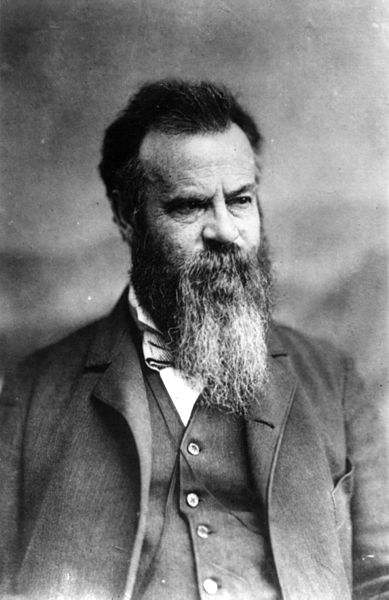Bureau of American Ethnology
The Bureau of American Ethnology was established in 1879 by an act of Congress for the purpose of transferring archives, records and materials relating to the Indians of North America from the Interior Department to the Smithsonian Institution. But from the start, the bureau's visionary founding director, John Wesley Powell, promoted a broader mission: "to organize anthropologic research in America." Under Powell, the bureau organized research-intensive multi-year projects; sponsored ethnographic, archaeological and linguistic field research; initiated publications series ; and promoted the fledgling discipline of anthropology. It prepared exhibits for expositions and collected anthropological artifacts for the Smithsonian United States National Museum. In addition, the BAE was the official repository of documents concerning American Indians collected by the various US geological surveys, especially the Geographical and Geological Survey of the Rocky Mountain Region and the Geological Survey of the Territories. It developed a manuscript repository, library and illustrations section that included photographic work and the collection of photographs.

Frances Densmore with Blackfoot chief Mountain Chief during a recording session for the BAE
John Wesley Powell was an American geologist, U.S. Army soldier, explorer of the American West, professor at Illinois Wesleyan University, and director of major scientific and cultural institutions. He is famous for his 1869 geographic expedition, a three-month river trip down the Green and Colorado rivers, including the first official U.S. government-sponsored passage through the Grand Canyon.
Powell as he appears at the National Portrait Gallery in Washington, D.C.
Powell served as the second Director of the United States Geological Survey, a post he held from 1881 to 1894. This photograph dates from early in his term of office.
John Wesley Powell and his wife, Emma, in Detroit in 1863.
First camp of the John Wesley Powell expedition, in the willows, Green River, Wyoming, 1871.





